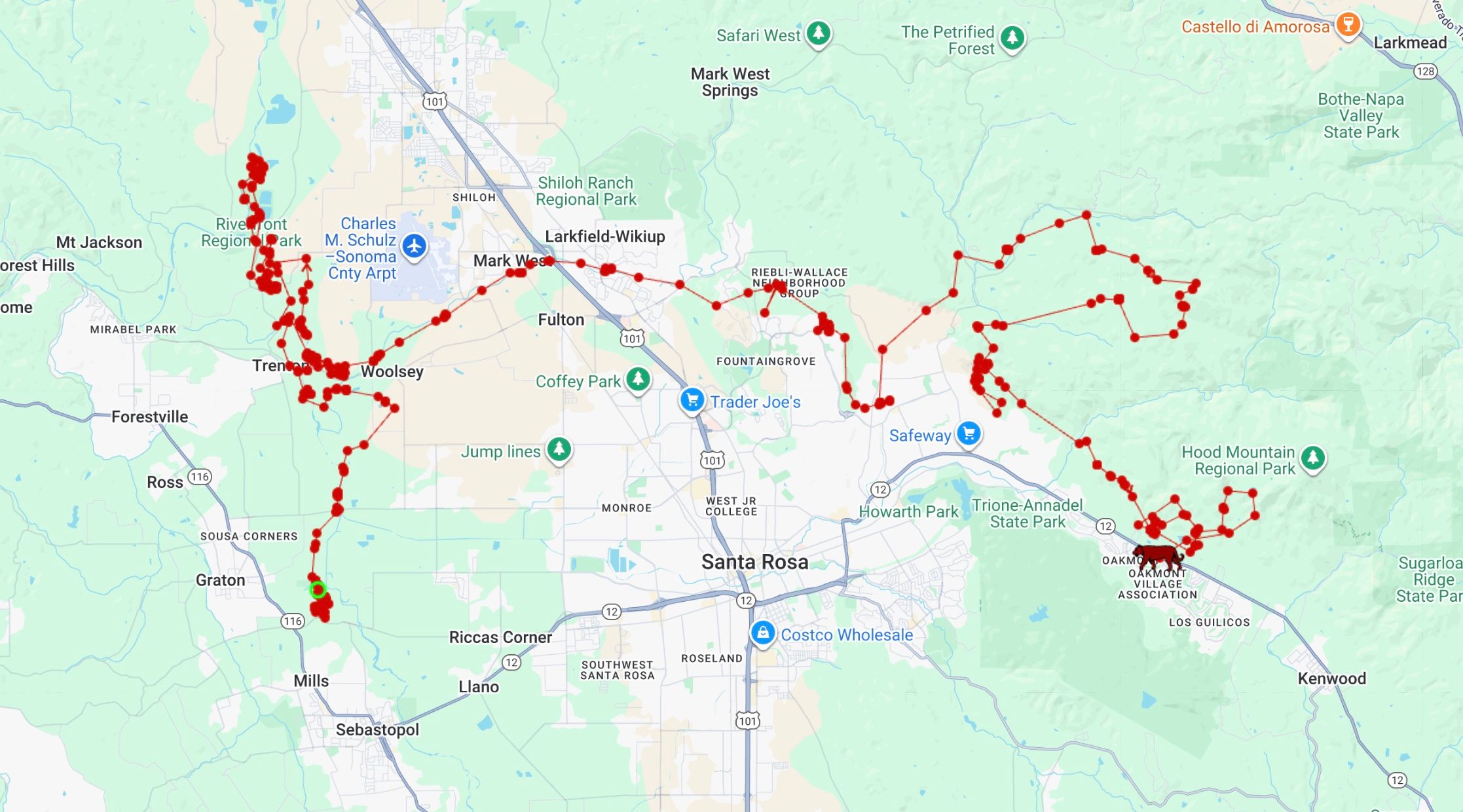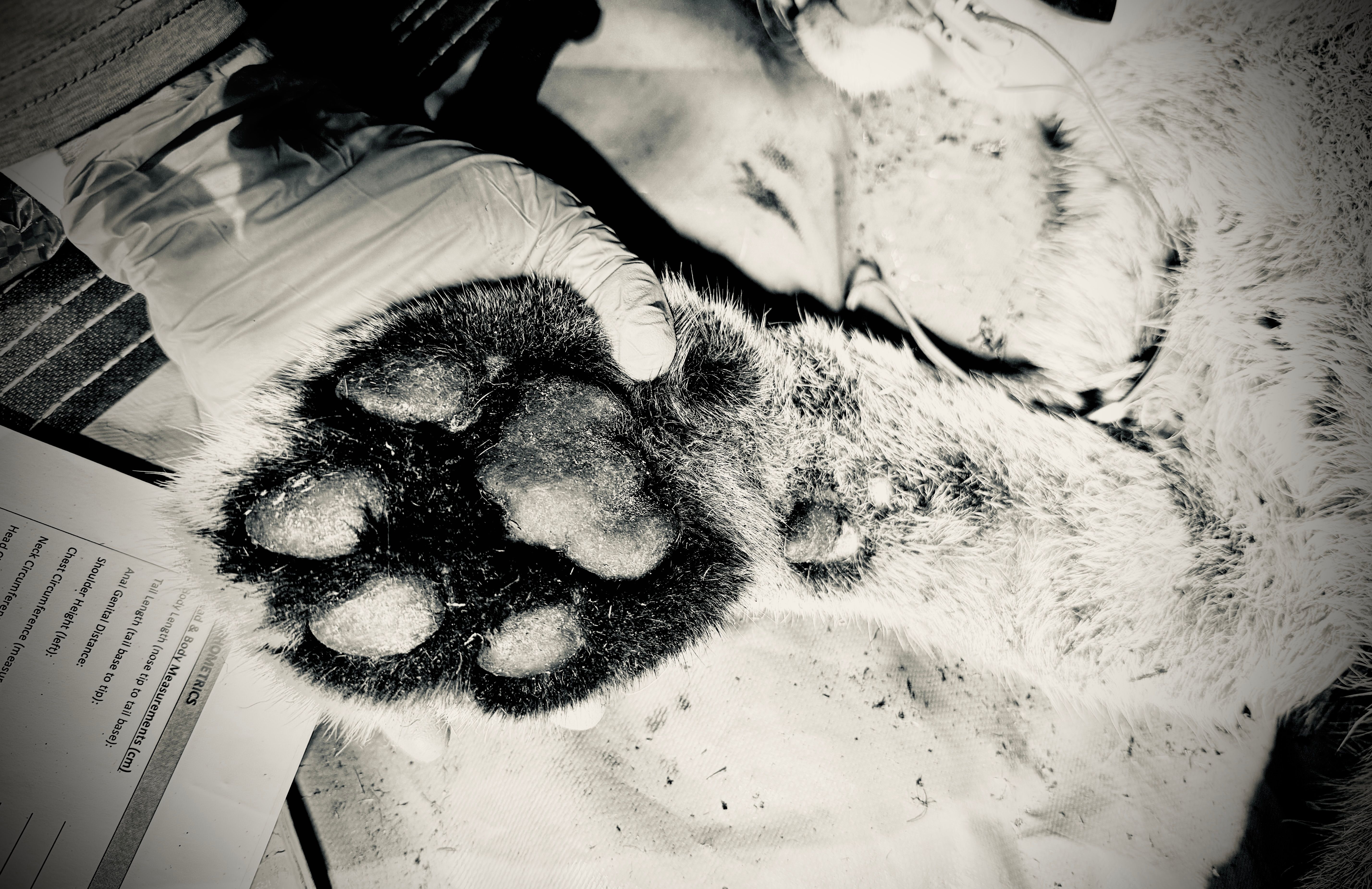TRACKING YOUR LOCAL LIONS
Below you will find mountain lion 'bios' for a number of the mountain lions we have collared during the project. You will find more updates on our True Wild Blog.
Study Area Map
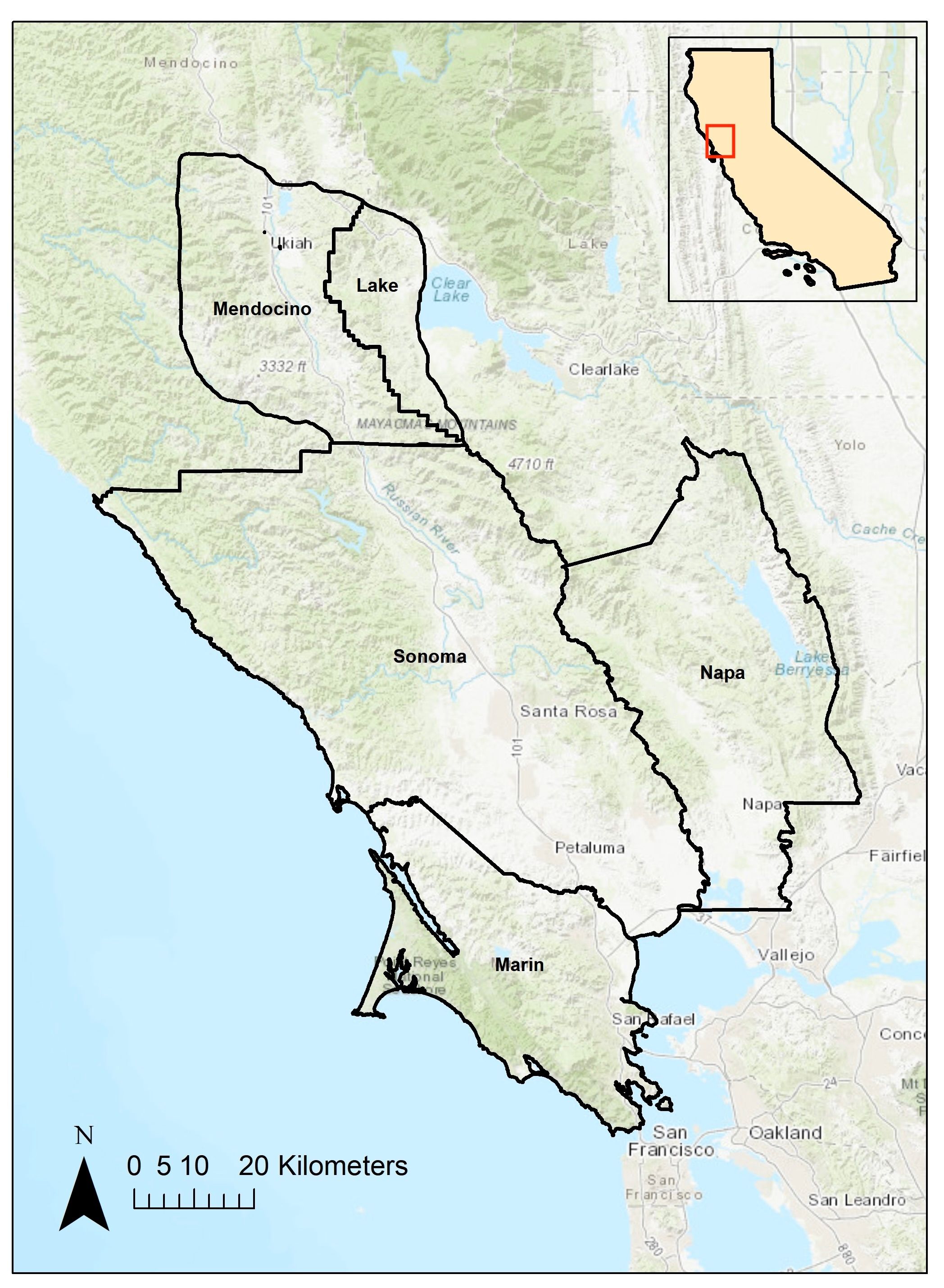
CURRENT MOUNTAIN LIONS TRACKED
P33 - Female
Status: ALIVE
Age: 2020 - Present
P33, an extraordinary mountain lion - the daughter of P12 and one of 5 cubs brought up to dispersal age, was captured and collared on Taylor Mountain on the 13 November 2021.
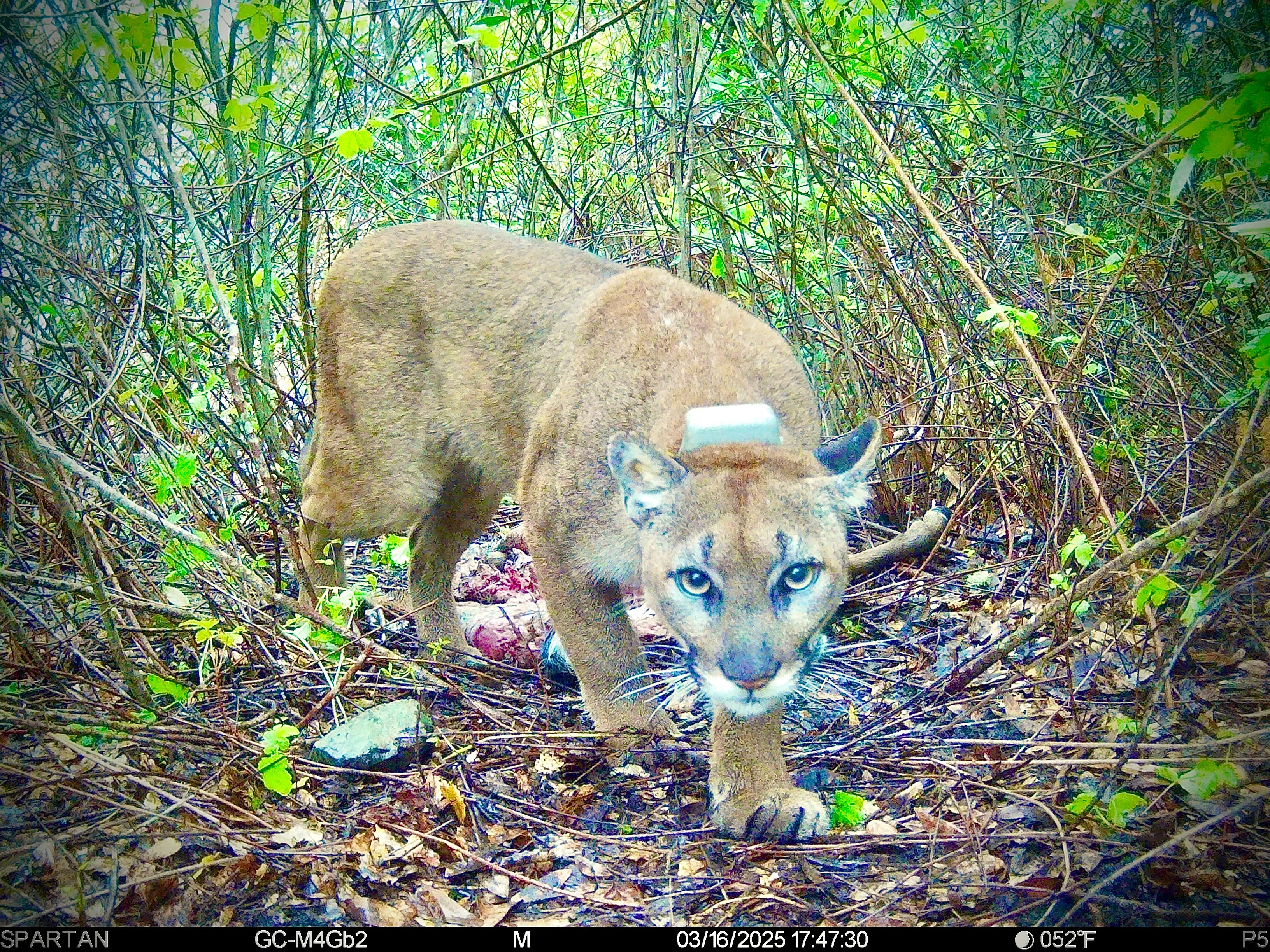
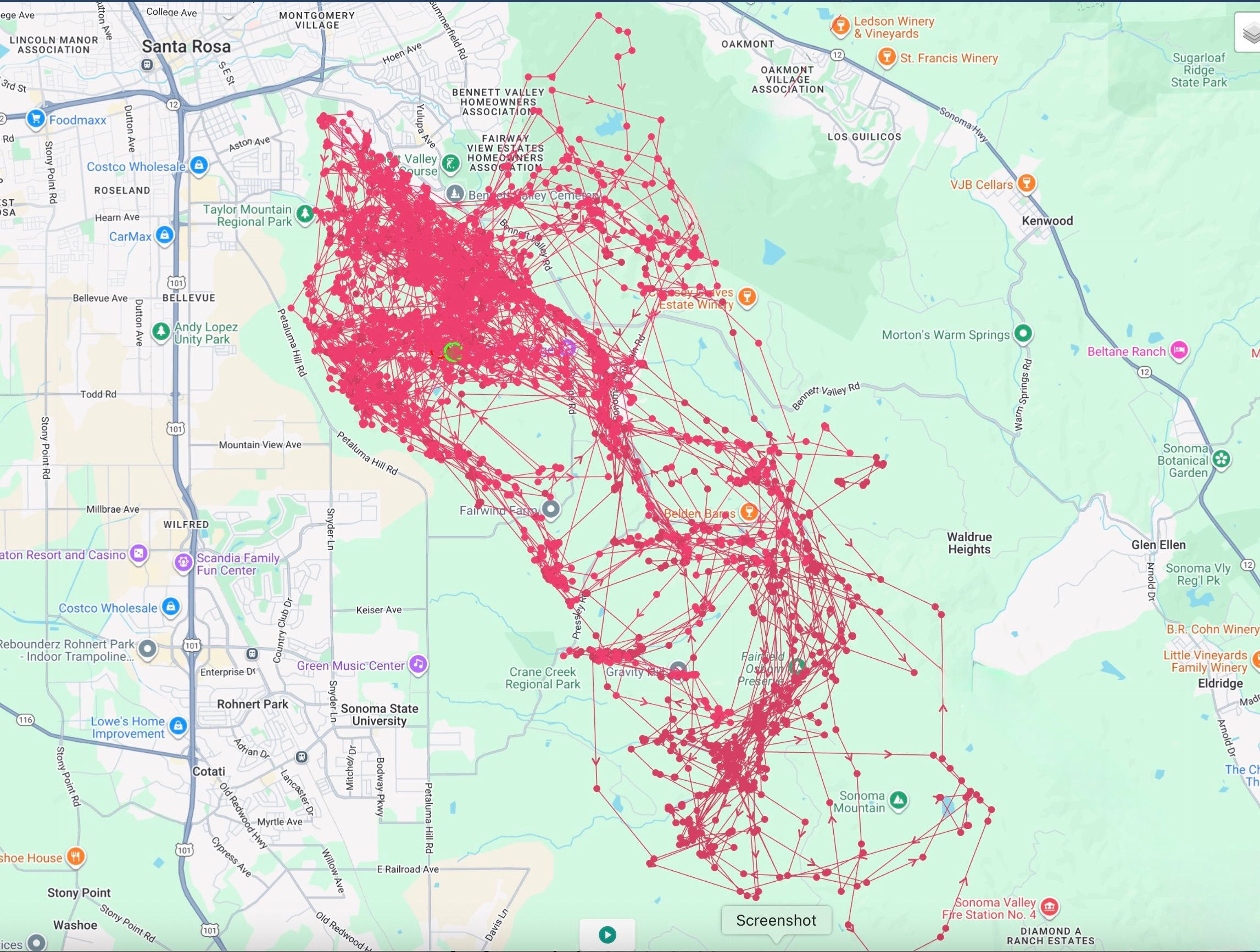
P33 has been documented to have had 2 litters of kittens. The first litter of 3 kittens was born on the 15th June 2023 but did not survive beyond the end of February 2024 (<8 months). She mated again with P13 on the 14th March 2024, and a new litter was born on the 17th June 2024. Only one kitten was observed and we were able to monitor her (P50) until she dispersed from P33 around August 2025.
P48 ('Atlas') - Male
Status: ALIVE
Age: 2021 - Present
P48 (Atlas) was collared near Occidental on the 7th November 2024. At the time his data indicated that he was not yet displaying territorial behavior, however, this seems to have changed.
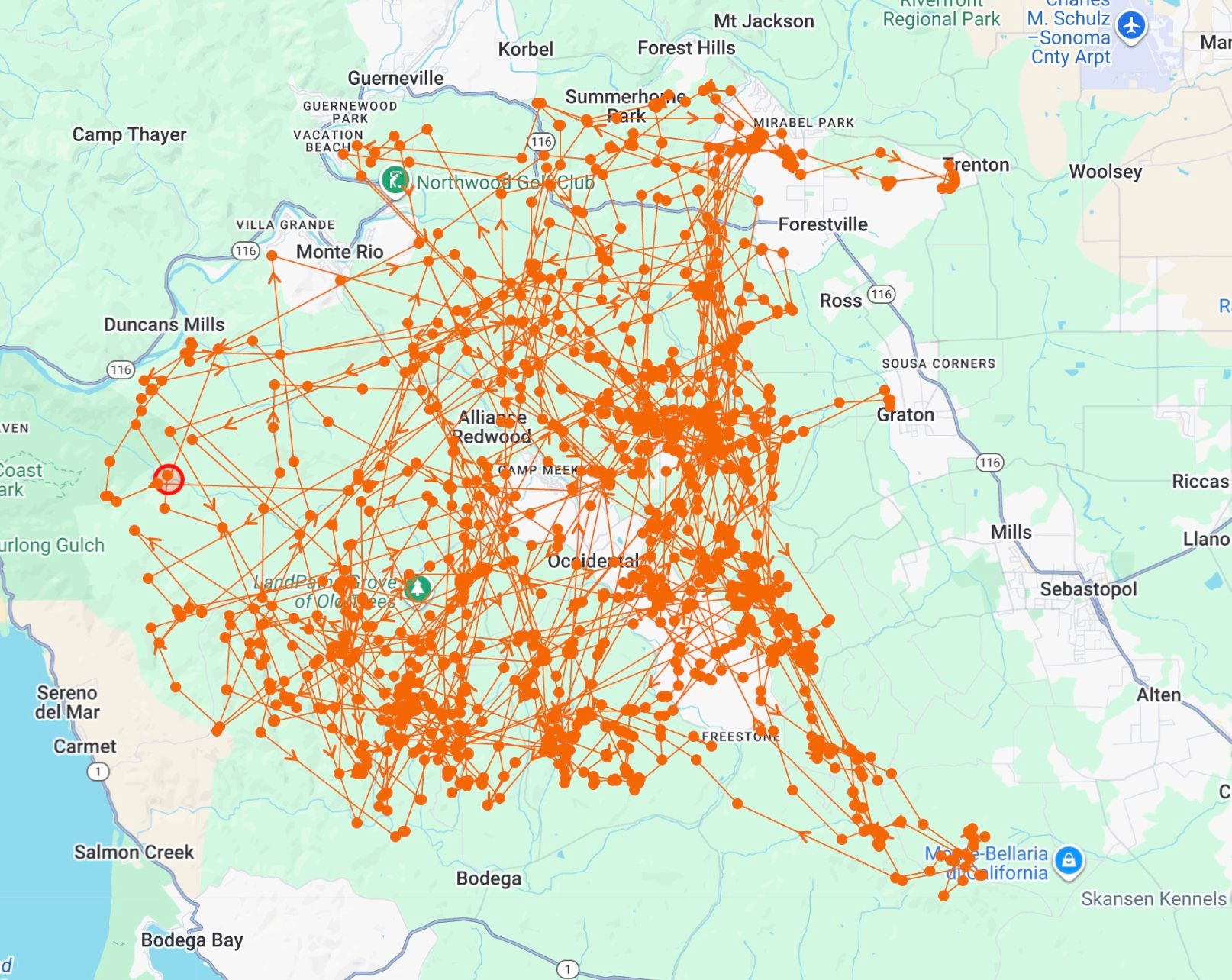
P49 - Female
Status: ALIVE
Age: 2022 - Present
Captured near Forestville, female P49 was captured and collared on the 25 January 2025 - she had 2 cubs aged 4-5 months with her at the time. Her range is particularly interesting as it is quite small and spans both sides of the Russian River. Both cubs appear to have survived to dispersal age and we have documented her being alone since September 2025.
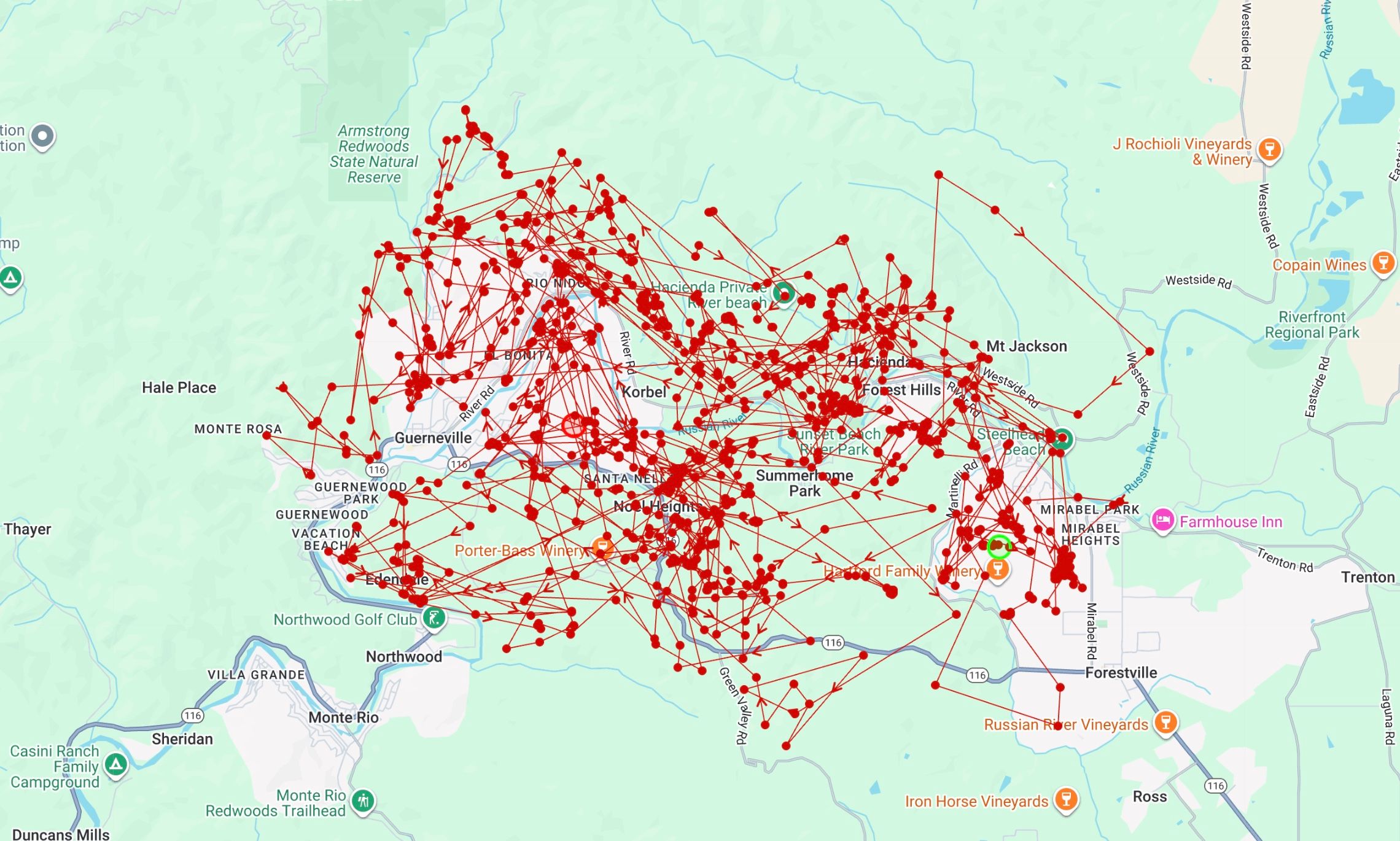
P50 - Female (daughter of male P13 (♂) and P33(♀)
Status: Presumed ALIVE (last documented September 2025)
Age: 17 June 2024 - Present
Captured and ear-tagged for the first time 13 April 2025, P50 was too young to collar. She weighed 16.6 kg at the time (36.5lbs). Despite considerable effort, we were unable to recapture and collar her before she dispersed from her mom P33.

P52 ('Khan') - Male
Status: ALIVE
Age: 2016 - Present
Captured and collared 27 October 2025, P52 was a large male of 132lbs and about 9 years old. He was captured in the area west of Cazadero, moving very much in the area P25 used to range.
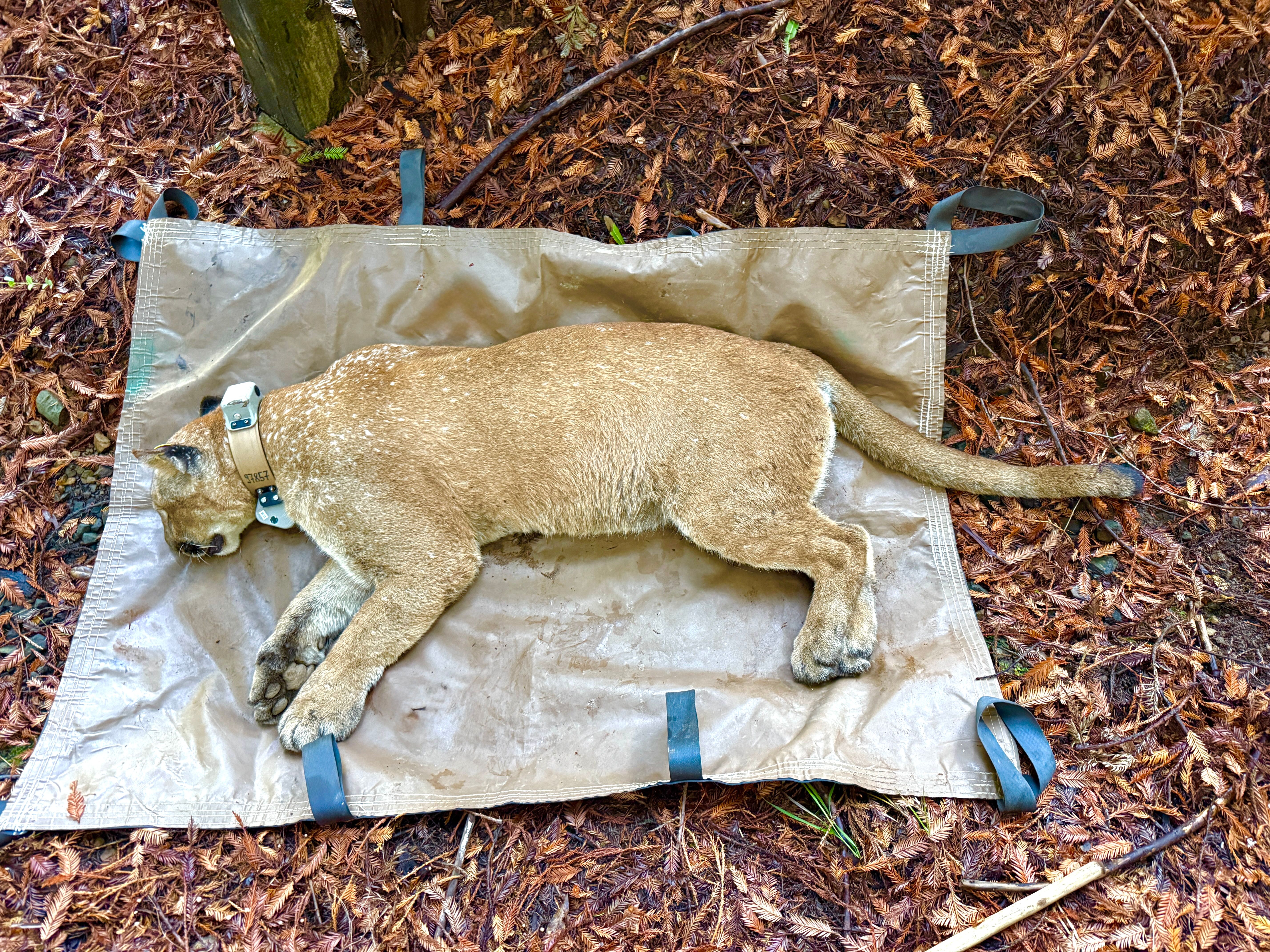
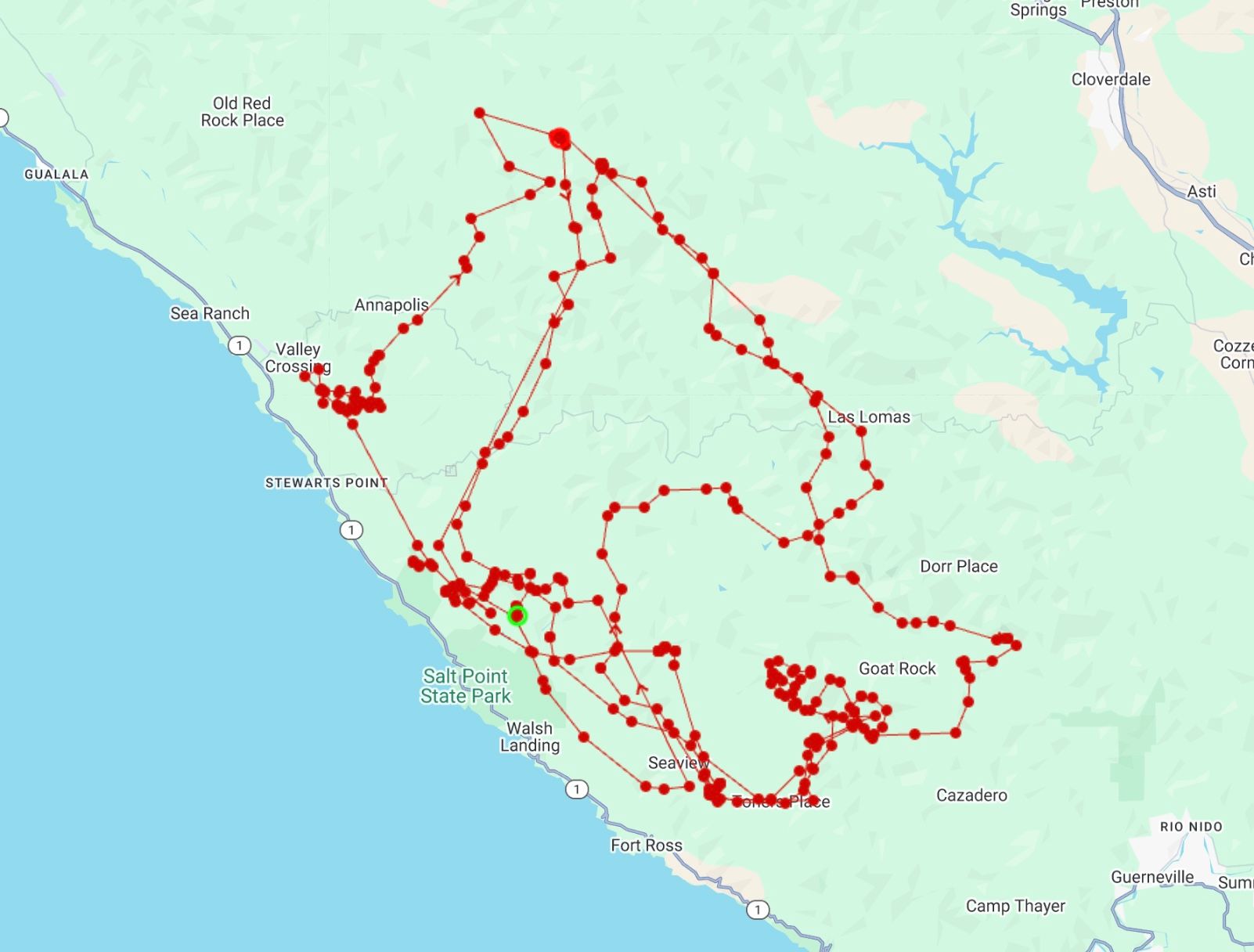
P53 - Male
Status: ALIVE
Age: 2021 - Present
Having set a bait near Jack London State Park, we got this male feeding on it on the 19th November 2025. The following day, a cage trap was set and we successfully captured and collared P53 - a large male of 119lbs and about 4 years old.
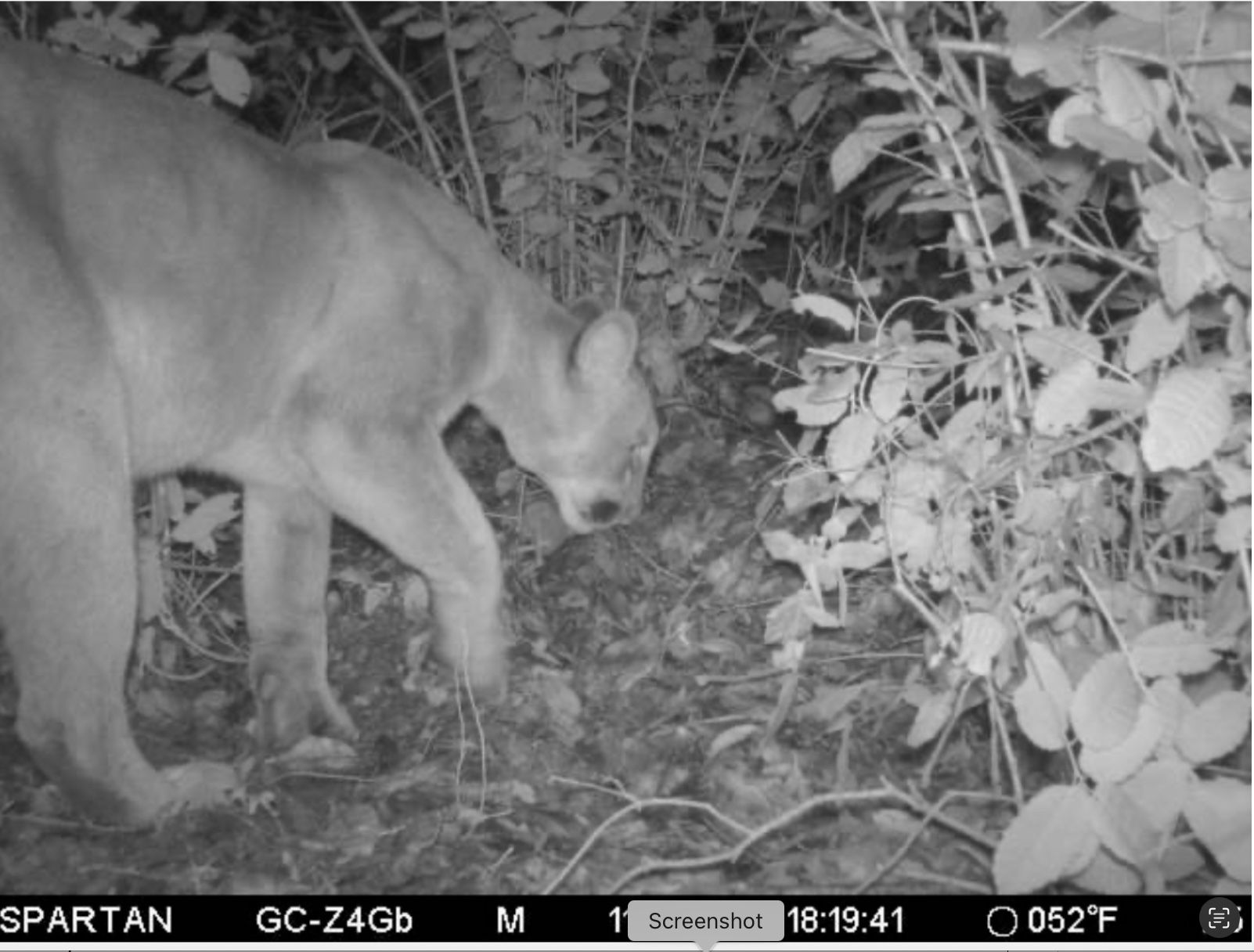
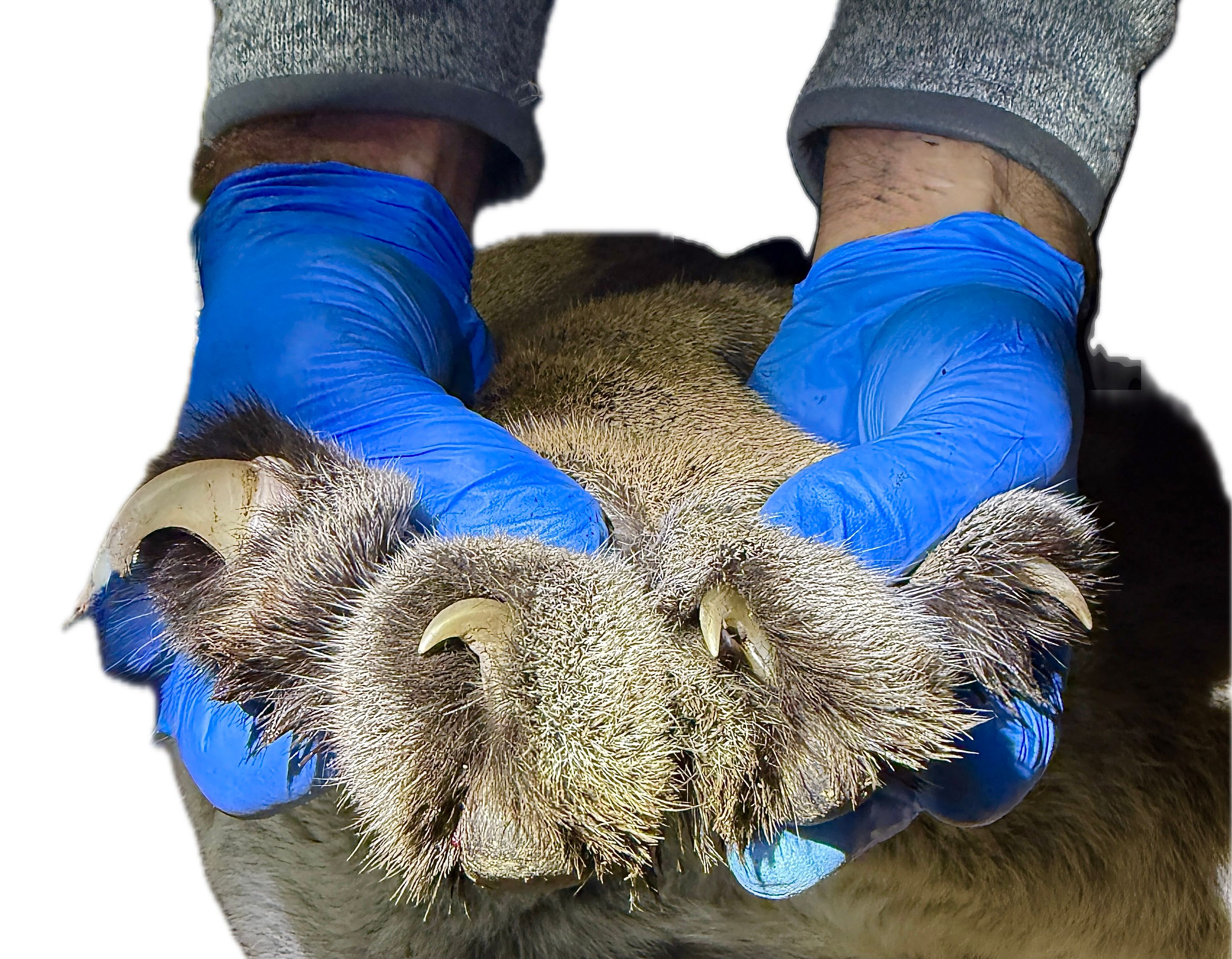
P54 - Male
Status: ALIVE
Age: 2021 - Present
This new male was caught on a bait near Sugar Loaf State Park, on the 28th November 2025. Also a large male of around 120lbs and about 4 years old, P54 could be the territorial male east of HWY12. We look forward to seeing what his range is.
PAST MOUNTAIN LIONS TRACKED SINCE 2016
P1 ('Supumama') - (female)
Status: DEAD (Depredation permit for killing livestock)
Age: 2007 - 3 December 2022
‘P1’ was first photographed in March 2016, 500 yards from the True Wild Visitor’s Center, on a Sonoma Land Trust property bordering ACR’s Bouverie Preserve.
P1 was captured and collared on the 6th October 2016 on Bouverie Preserve - the first puma collared by the Living with Lions team. She is still alive and is estimated to be about 15yrs old - quite old for a wild mountain lion. She also has a very calm demeanor whenever we have come across her. The following poster tells more of her story.

We were aware of P1 killing mostly livestock in 2022 and were concerned about her behavior; so much so that we reported this to the wildlife authorities (CDFW) and recommended she be euthanized on the 3rd December 2022. P1 was killed in early December 2022 after attacking a dog and then killing livestock. Some members of the public were vociferous about the the threats mountain lions pose to the public, however, in January we received the report on the necropsy done on P1 after she was killed. It was established that P1 had been shot at least a couple of times before this December event - some of the signs being quite old. Signs of buckshot were found in her rump. Her front left leg had been badly damaged by a gunshot. The elbow area between the humerus and ulna was completely shattered by a bullet. These severe injuries would have made it very difficult for her to walk which may have led to the significant change in her diet and behavior.
The public needs to be made aware of the potential consequences of irresponsible and reckless attempts of landowners to shoot mountain lions. Apart from being inhumane to leave a wounded animal on the landscape, these actions can lead to a compromised lion being a serious threat, potentially even to people, as well as their livestock due to their inability to effectively hunt natural prey. It should be made clear to the public that if a landowner has an issue with a mountain lion that it should be dealt with professionally by the relevant authorities. Since the P1 incident, we have noted P33 was shot and ended up with a fractured hindlimb and P4 looks like she was shot in the face where several of her teeth were shattered.
P2 - Female
Status: DEAD (Depredation permit for killing livestock)
Age: 2015 - 13 December 2017
P2 was the daughter of P1. We first collared her on the 12th November 2016 when she was still with her mother and a male sibling (status unknown). On the 24th December, P2 dispersed from her mom and started exploring the area on her own. She was eventually killed less than a year after she left her mom when she killed livestock in Glen Ellen.

P4 - Female
Status: Most likely dead
Age: 2011 -
First collared in February 2017, P4 was tracked as having her range mostly in Napa from Arrowhead Mountain south of Sonoma, to the Oakville Grade 10 miles to the north. Her first collar dropped off prematurely after only about 5 months of tracking, however, we were able to recapture her and keep her monitored for the past few years. P4 was collared 5 times during the time we tracked her. The last data we received from her collar was on the 30th September 2024. We were unable to recapture her before her collar battery went flat.
P4 collar 2 showing her ~40sq.mile range

P4 collar 3 showing her current ~50sq.mile range

We have documented P4 having several litters of kittens but have not been able to capture or track any of the ones that might have survived to disperse from her. The last litter of 2 kittens she had were born on the 16th February and discovered by Quinton on the 3rd March 2021.
P4 kittens born on the 16th February in Napa

P5 - Male
Status - Most likely dead; last record May 2023
Age: 2010 -
P5 was first captured and collared on the 1st April 2017 after he killed a large goat and dragged it over 500 yards, over a hill, and into a drainage. He stood out as being the main territorial Tom in a vast area stretching from Mark-West Springs in the north to below Sonoma in the south, straddling both sides of HWY12. From the genetic results we have on the project, P5 has been the most prolific breeder in the area, with many of the other lions in the area being offspring of his. In the map below, P5's GPS points are in yellow, P1 in green and P4 in purple. The last trail camera photos we received from P5 were in the MArk-West - Calistoga area where he was looking quite old. It is highly unlikly he is still alive at 15 or more years old.


P6 - Female
Status: DEAD (Depredation Permit for killing livestock)
Age: 28 March 2017 - 25 July 2018
P6 was the daughter of P1 - part of a litter of 3 born on the 28th March 2018. Quinton found the den on the 7th April while P1 was away hunting. The kittens were stashed in some pampas grass less than 100 yards from a large villa in Glen Ellen. We managed to collar P6 on the 28th February 2018 just before she left her mom. She dispersed from her mom on the 17th April 2018 (P1 left her daughter a deer as a going away gift). Three months later she was killed on a depredation permit after killing livestock in Kenwood.
P9 - Female
Status: Dead (Health reasons)
Age: 2010 - 1 September 2019
More to come on P9's story
P10 - Female
Status: Unknown (possible collar failure)
Age: 2009 - 23 May 2019
More to come on P10's story
P11 - Female
Status: Dead (Health reasons)
Age: 2015 - 24 March 2024
More to come on P11's story
P12 - Female
Status: Unknown
Age: 2016 - 9 July 2019
More to come on P12's story
P13 - Male
Status: DEAD (Died of bacterial Bronchial Pneumonia linked to Feline Leukemia Virus in April 2024.)
Age: 2015 - 29 April 2024
On the 7th November 2021, we were able to recapture P13 on Taylor Mountain Regional Park to replace his faulty $3,000 GPS collar. We captured him in one of Quinton & Neil’s unique electronic cages that does not require bait. The walkthrough trap had worked perfectly, and we encountered him being quite calm in the trap, playing with one of the soft, wooden bite sticks left in the cage to keep the lions occupied in lieu of bait. We were able to replace his collar and send the faulty one back to Germany to be repaired or replaced.
P13 has been collared since the 13th December 2018 beginning as a young adult male without a fixed territory, to the main territorial male in the area west of HWY12 and south of Santa Rosa, having managed to oust P5.
P13 movement in the early part of tracking him when he had yet to establish his territory

P13 movement once he had established his territory

P16 ('Luna') - Female
Status: DEAD (Died of unknown health reasons)
Age: 2017 - 30 October 2021
In May 2019 we had an opportunity to capture and collar a lion that had been feeding on a deer on a private property just north of Sonoma. It turned out to be a young adult female who had showed no signs of breeding yet. Her lion research ID was P16 and the landowners decided to call her Luna. Since then Luna established a territory of her own and started to breed.
On the 14th February 2020 she had a litter of two cubs in the Kenwood area. Quinton was able to monitor these two kittens from when they were a week old. It was astonishing to see that the mom did not hide the kittens very well, and for the duration of the denning period, stayed in one relatively exposed area.
Luna died on the 30th October 2021 of unknown health reasons. We found her a few hours after she died - a necropsy was performed but no clear indication of cause of death was determined.
Luna's first pair of kittens on an exposed ledge in the mountains

At the 2 month mark, Luna had the kittens begin to follow her, and a week later, the male P5 came into the area - venturing into part of the territory that he had previously lost to another male. He killed and ate both kittens, as he would have known they were not his. Cases of infanticide like this induce estrous in the female and it was just over a week later that P5 met up with P16 again and mated with her - the result, a single kitten P27 (Stella).
For people, this scenario can be shocking. For territorial animals like this it is standard practice. It is also the reason why we do not recommend relocating adult territorial predators like mountain lions (which is sometimes a well-meaning suggestion as a means of dealing with a conflict situation). The result can have a devastating effect on the social system that the mountain lion is relocated into - he would fight with the territorial male, potentially killing him. Then he would kill any cubs in the area. With an average of three females in each male’s territory, that could be about 9 cubs.
P16's territory

P16's story continues below with her daughter, P27.
Later in the year when she was old enough (1yr) we recaptured her to place a collar on her to track her movements when she was ready to leave her mom and disperse. Unfortunately in October she died, along with her mother, P16, three weeks later. The causes are still unknown, potentially a communicable disease. A necropsy was performed and we are expecting results in early 2022.
P24 ('Loki') - Male
Status: DEAD (Depredation - encounter with livestock)
Age: 2019 - 30 November 2021
P24 was collared near Healdsburg and his data indicated that he was the territorial male despite being fairly young. He seemed, unusually, to favor livestock over deer, and this led to his early demise when he was killed in December during a livestock depredation incident.
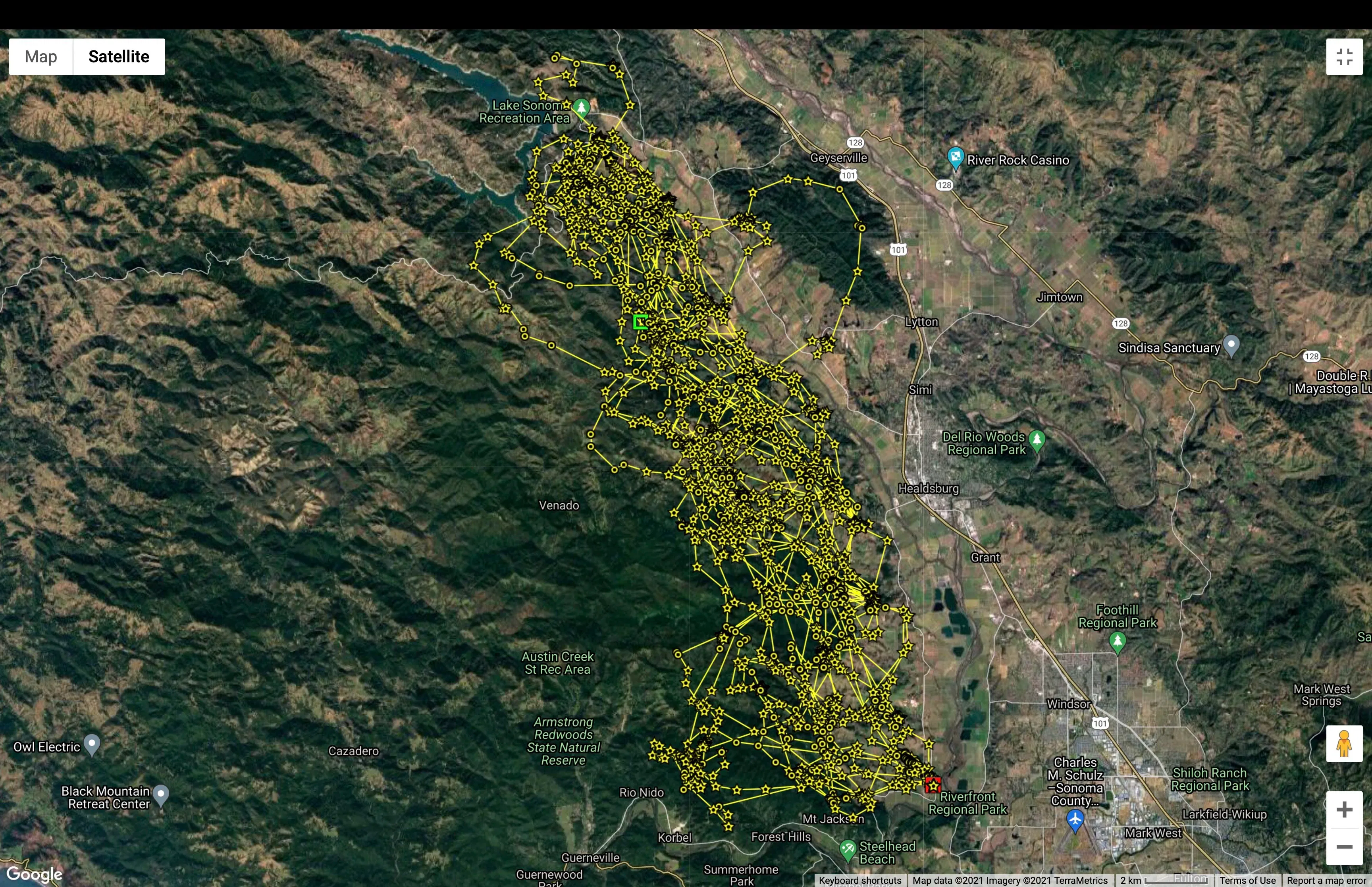
P25 ('Thor') - Male
Status: Unknown
Age: 2021 - unknown
P25 was the territorial male using Cazadero and north of there. He has access to wild boar which he seems to enjoy as part of his diet. Trail camera images near Jenner showed his collar damaged and unable to transmit data.
P25's GPS data this year
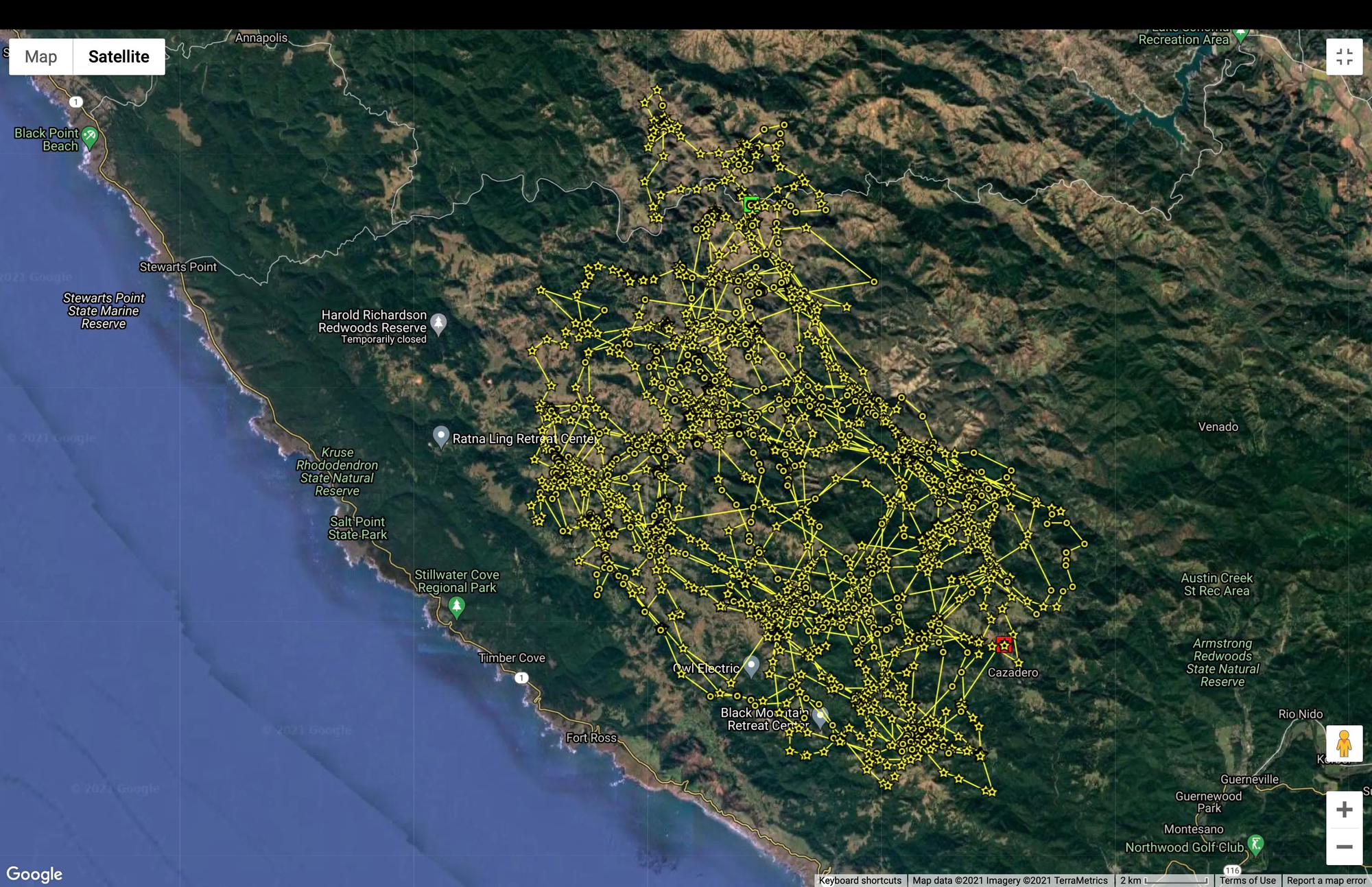
P26 ('Wobbly') - Female
Status: Dead (euthanized for health reasons)
Age: 2017 - 18 October 2021
Mountain lion P26, known as Wobbly to us, was a fascinating mountain lion to watch over the past 5 years. We first caught sight of her on a trail camera as a roughly 6-month old kitten in May 2017 and immediately noticed her stilted gait. She seemed to have some kind of congenital neurological disorder that impacted her gross motor movement. She continued to be seen by nearby residents on critter cams over the years and was finally collared in March of 2021 in Penngrove.
We were impressed by her ability to feed herself and survive given her condition, even killing fully grown deer. However, we noticed some unusual patterns in the way she moved through her home territory: she would often use only the edges, the margins, dipping into drainages and creeks on the edges of human habitat and perhaps avoiding other more dominant lions, which is behavior we typically expect of juvenile cats.
P26's movements

To our surprise, she mated with a territorial male P13 and delivered two kittens on June 27. She abandoned them, however, within a day or so, presumably not able to take care of them.
Map showing GPS points of P26 (yellow) and P13 (blue) while they were together for several days during mating

For the next month after that she spent all her time in a small creek bed running down towards Costco in Santa Rosa. When a resident called to say her cat had disappeared and she had seen a mountain lion Quinton and Jake tracked P26 with the radio telemetry and caught a glimpse of her peering at them through the brambles.
P26 keeping an eye on Quinton from the cover of brambles

On 18th October Wobbly was spotted in a dry creek bed near the Evergreen Elementary School in Rohnert Park causing local schools to lock down for a few hours. Within an hour a varied group was called in to assess and diffuse the situation—from the Rohnert Park police to True Wild’s Quinton Martins, California Department of Fish & Wildlife (CDFW) personnel, veterinarian Graham Crawford, and Doris Duncan from Sonoma County Wildlife Rescue (SCWR). Once it was established that P26 was unresponsive and staying out in the open, contrary to normal mountain lion behavior, she was darted and taken to SCWR for observation.
P26 crouched in the open in a dry creek bed

She had lost a lot of weight and though there were no obvious injuries she was clearly unwell. She was taken to the VCA Animal Care Center in Rohnert Park where she underwent multiple tests and scans, including an MRI, to see if they could determine what was wrong. There was nothing conclusive but she was clearly in a very bad state. Due to her history of having what appears to have been a severe congenital neurological disorder, combined by her rapid deterioration in body condition and overall health, CDFW in consultation with various relevant experts, decided to euthanize her on the 22nd October.
P26 x-ray - An unusual look at the inside of a mountain lion's stomach - note the deer bones and teeth

P27 ('Stella') - Female (Daughter of P16)
Status: DEAD (Died of unknown health reasons)
Age: 7 August 2020 - 9 October 2021 (14 Months)
Stella was the only kitten of Luna’s (P16) second litter. P5 was the father of P27 born on the 6th August 2020. This time Luna managed to keep her safe through the early months. P27 as a 13 day old kitten, secreted away in the bowl of a burned madrone
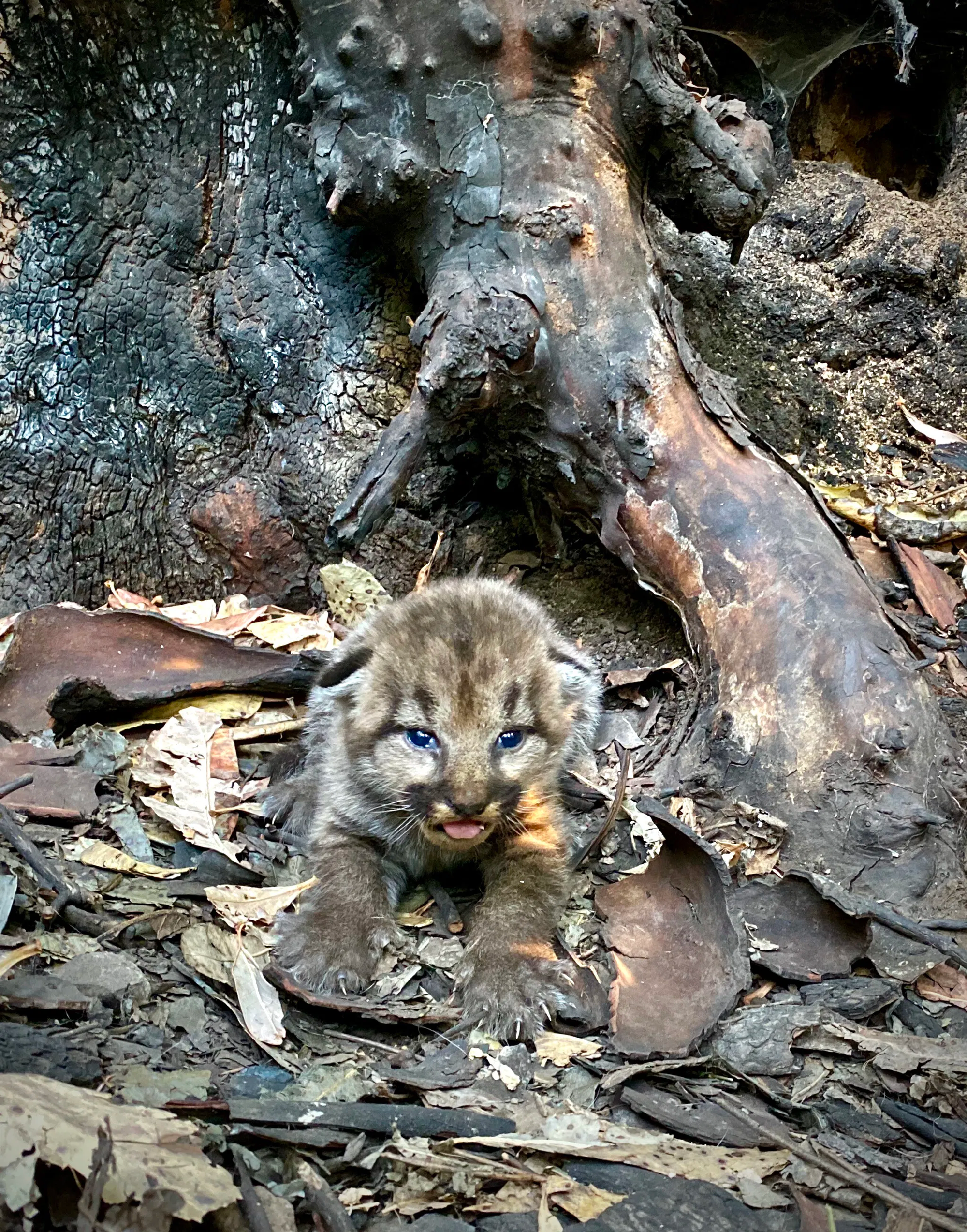
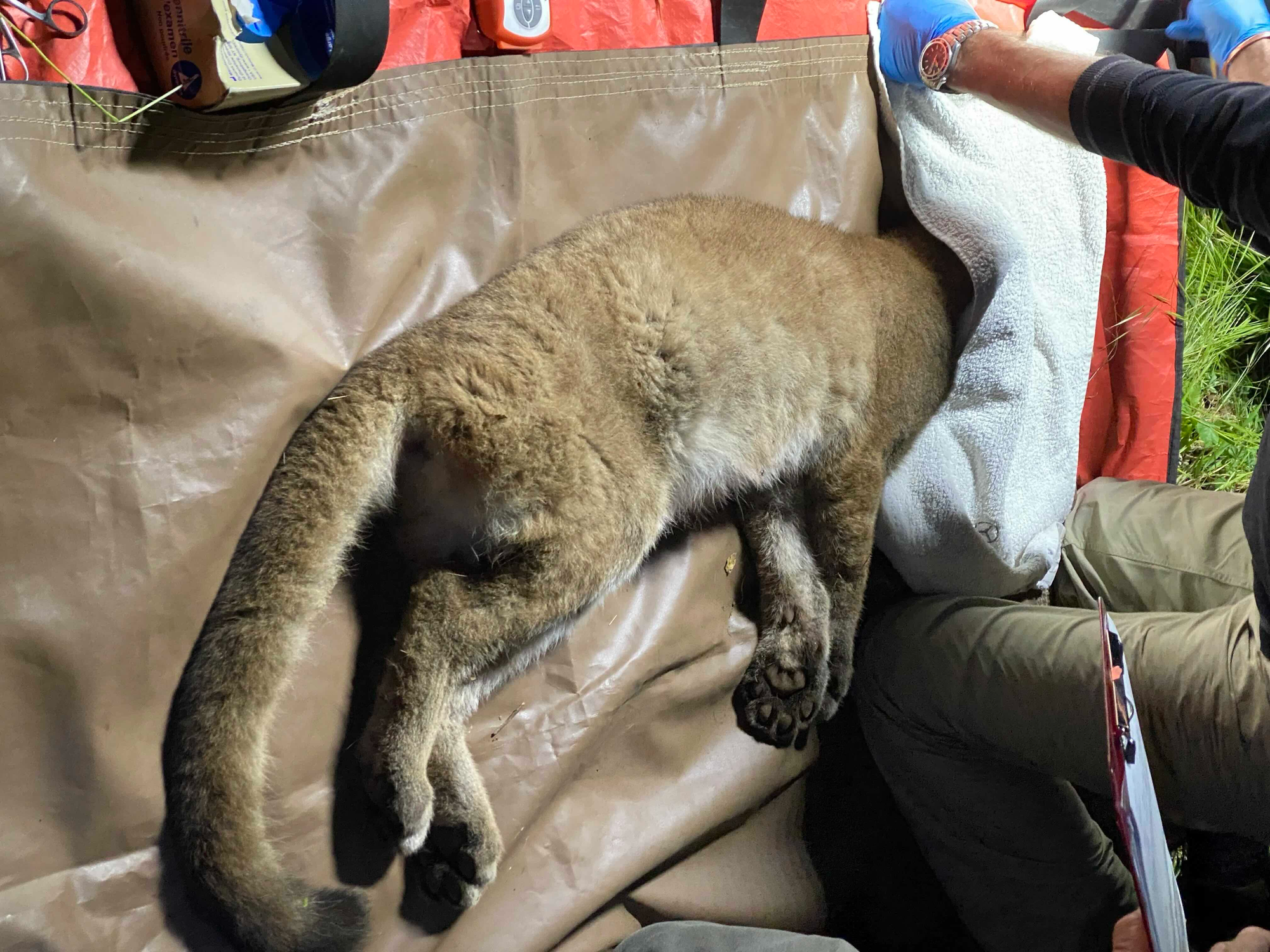
In March 2021, we were trying to capture Luna to replace her collar when her daughter went into the trap. We ear-tagged her P27 and she was named Stella. P27 immobilized to be ear-tagged for research identification at 8 months of age
P30 - Male
Status: Unknown
Age: 2019 - unknown
We were alerted by a landowner near Geyserville that their goat had been killed by what seemed to be a mountain lion. Immediately we set out to investigate and found that the kill had been made by a lion. A trap was set and that same evening we captured a young adult male, P30.
P30's paw - young feet, pads not yet cracked with wear and tear

P30's movements overlapped somewhat with P24's territory, but it is unlikely that he posed any kind of threat to P24 who was older and the dominant male in the area. Now that P24 is dead, it will be interesting to see if P30 takes over part or all of P24’s range. The landowners were encouraged to find a way of adequately protecting their other livestock as they live in good mountain lion habitat, and the possibility of another attack by the same or another lion will always be there unless the animals are protected.
P30's GPS data

P31 - Male
Status: Unknown
Age: 2011 - unknown (thought to be dead)
As with P30, we were called to help with a lion depredation event near Sebastopol where a large ram was killed along the edge of a creek. This case was more unusual for us as it was a commercial farmer with a medium-sized flock of sheep. Most losses we encounter are with landowners who have fewer than a dozen small stock. We set a trap and caught P31, a fully mature, ~130lb male lion of about 8yrs old. The nearby creek was a perfect corridor for him to use and the 7ft fencing around the sheep paddock could not keep a lion out (they can jump 15 feet high!).
Since collaring him, we have seen that P31 frequently crosses the Russian River. This surprised us as we anticipated a river of that size to be a natural boundary between two territories.
P31's GPS data shows how his territory straddles the Russian River

P51 - Male
Status: DEAD (car strike)
Age: 2024 - 12 NOVEMBER 2025
Captured and collared 24 September 2025, P51 was a young dispersal aged male of about 18 months old. He was captured near Sebastopol after killing a sheep - on a property where the female P39 and her 2 dispersal aged offspring killed a sheep a month before. It is possible P51 is the male offspring of P39 who was shot and killed on the 19 August 2025.
He was not collared very long before he was unfortunately killed by a car on HWY12 in Kenwood. His movements showed classic male dispersal behavior, sticking to sub-optimal habitat, even crossing over the HWY 101.
